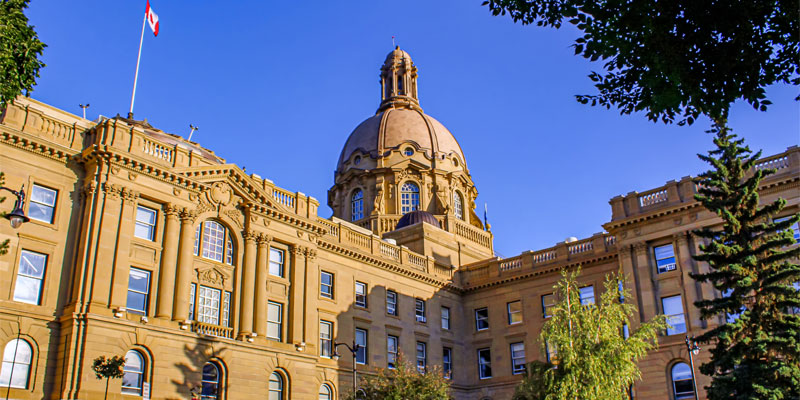Spending reductions key to Kenney government fiscal plan

The largest global recession since the Great Depression, an unprecedented drop in energy prices, and a global health pandemic have contributed to Alberta’s historic $21.3 billion budget deficit, explains Finance Minister Travis Toews. And yes, these events are largely outside of the government’s control. To address the province’s significant fiscal challenges, however, the Kenney government must focus on what it can control—spending.
According to the most recent fiscal update, Alberta will incur sizeable deficits over the next three years—a $21.3 billion deficit in 2020/21, a $15.5 billion deficit in 2021/22 and a $9.9 billion deficit in 2022/23. By the end of the government’s fiscal plan, Alberta will have run 15 years of nearly uninterrupted deficits (excluding 2014/15). Of course, deficits add up over time and add to the provincial debt.
Albertans today (and in the future pay) for this debt via government debt interest payments. The recent projection forecasts that interest payments will cost Albertans $3.0 billion by 2022/23. Growing government debt interest consumes resources now unavailable for priorities such as health care, education and pro-growth tax relief.
Clearly, to rein in deficits, the government needs a plan forward once this crisis passes—again, focusing on what it can control. Spending.
Over the last two decades, growth in government program spending (all operating spending minus debt interest costs) has routinely exceeded what would be needed to account for inflation and population growth. Despite the downturn in commodity prices in 2014/15 and the associated fall in revenue, Alberta still failed to restrain spending despite these fiscal challenges. As a result, the province was rapidly accumulating debt even before COVID-19.
Going forward, spending reduction is key. Indeed, there’s substantial evidence, which indicates that spending reform works to effectively tackle large deficits. For instance, in the 1990s, governments across Canada—and across the political spectrum—faced similar fiscal crises and successfully eliminated large budget deficits through swift spending reductions.
Let’s start with Alberta’s own history. In the ’90s, Premier Ralph Klein’s government reduced program spending by 21.6 per cent over three years to eliminate a sizeable deficit similar to today’s (relative to the size of the economy in both periods, the size of the deficit is nearly identical).
In Ottawa, Jean Chrétien’s Liberal government reduced program spending by 9.7 per cent over two years following the 1995 Budget, which called for a comprehensive program review with the explicit goal of reducing and prioritizing spending. Chrétien eliminated the federal budget deficit by 1997 and maintained a decade of uninterrupted surpluses while delivering pro-growth tax relief.
Finally, the ’90s NDP government of Roy Romanow in Saskatchewan reduced spending by 11.1 per cent over three years, eliminating a substantial deficit. This reduction in spending helped bring the province back from the brink of insolvency and laid the foundation for a lengthy period of prosperity.
Many opponents of such reforms warned that spending reductions would hurt the economy. On the contrary, however, all three jurisdictions prospered in subsequent years.
There’s a lot the Kenney government can’t control, but it can control spending. The answer to Alberta’s fiscal challenges begins with swift purposeful spending reduction and reform once this crisis passes.

